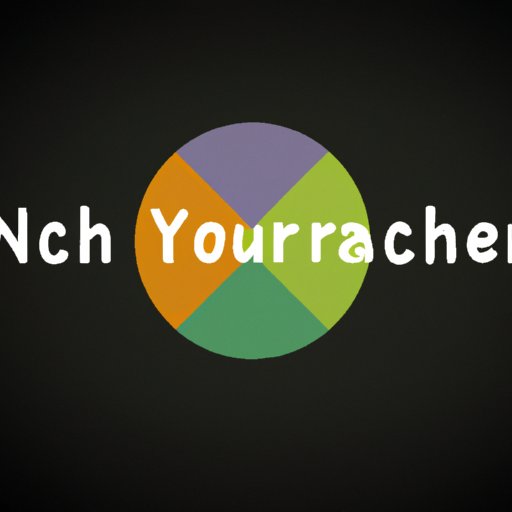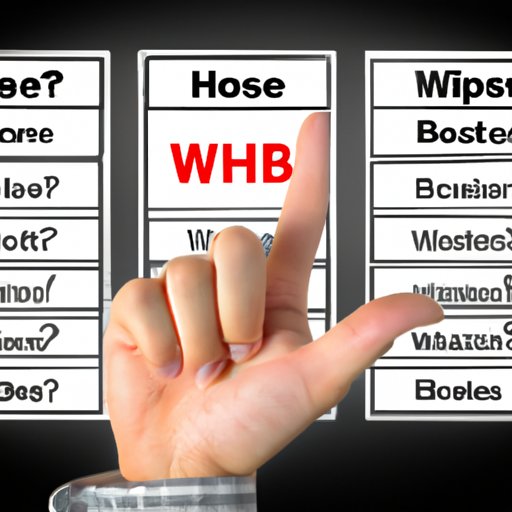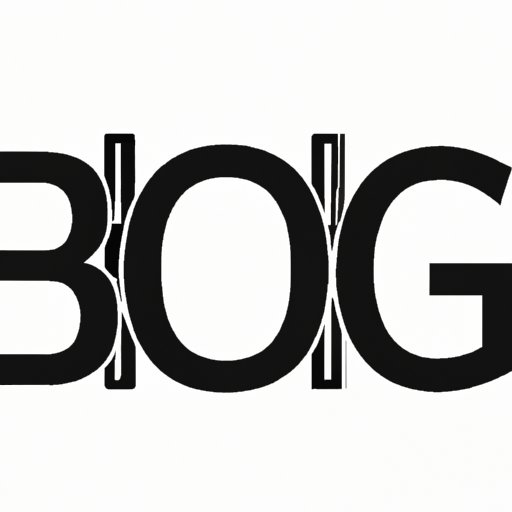Introduction
Creating a blog can be a great way to connect with readers, share ideas, and build an online presence. But starting a blog website can seem like a daunting task. Where do you start? What do you need to consider? How much time and money do you need to invest?
This article provides a comprehensive guide on how to start a blog website, from analyzing your niche and market to designing and customizing your blog. With this guide, you can get started on your own blog website in no time.

Analyze Your Niche and Market
The first step of creating a blog website is to analyze your niche and target audience. Think about what type of blog you want to create and who your target readers are. Do you want to focus on a specific field or topic, such as travel, lifestyle, or fashion? Or do you want to create a more general blog?
It’s important to do your research before deciding on a niche. According to a study by HubSpot, “63% of marketers say generating traffic and leads is their top challenge.” Make sure that there is an audience for the type of blog you want to create, so that you can generate traffic and leads.
Choose a Domain Name
Once you have decided on a niche and target audience, it’s time to choose a domain name. Your domain name should be easy to remember and reflect the purpose of your blog. It should also be unique and not too long, as long domain names can be difficult to remember.
When selecting a domain name, make sure that it is available. You can use a domain name checker to see if the name you want is available. If it is not, you may need to come up with another option.

Choose a Web Hosting Service
Once you have chosen a domain name, you will need to select a web hosting service. When choosing a web hosting service, consider your budget and needs. Do you need a shared hosting plan, a dedicated server, or a VPS? Compare different hosting services to find one that meets your needs.
It’s also important to consider the customer service offered by the hosting provider. According to a survey by HostAdvice, “92% of customers said they would recommend a hosting company based on good customer service.” Make sure to select a hosting provider with excellent customer service.
Install WordPress
Once you have selected a web hosting service, you will need to install WordPress. WordPress is a popular content management system (CMS) that makes it easy to create and manage a blog website. It offers a variety of features, such as themes, plugins, and customization options.
Installing WordPress is fairly straightforward. Most web hosting services offer an automated installation process. You can also find detailed instructions online for manual installation.
Design and Customize Your Blog
Now that you have installed WordPress, it’s time to design and customize your blog. WordPress offers a wide range of themes and plugins to help you create a professional-looking blog. You can also customize the look and feel of your blog by adding widgets, menus, and logos.
Take some time to explore the different themes and plugins available. Consider which ones best meet your needs and provide the look and feel you want for your blog.
Start Writing Content
Once you have designed and customized your blog, it’s time to start writing content. Create interesting and informative content that engages readers and encourages them to visit your blog regularly. You should also consider SEO strategies to help your blog rank higher in search engine results.
You can also engage readers by creating polls and surveys, hosting giveaways, and responding to comments. These activities will help you build a loyal following and increase traffic to your blog.
Conclusion
Starting a blog website can seem like a daunting task, but it doesn’t have to be. With this comprehensive guide, you can get started on your own blog website in no time.
To recap, the steps to starting a blog website include analyzing your niche and target audience, choosing a domain name and web hosting service, installing WordPress, designing and customizing your blog, and writing content.
By following these steps, you can create a successful blog website that engages readers and builds an online presence.
(Note: Is this article not meeting your expectations? Do you have knowledge or insights to share? Unlock new opportunities and expand your reach by joining our authors team. Click Registration to join us and share your expertise with our readers.)
